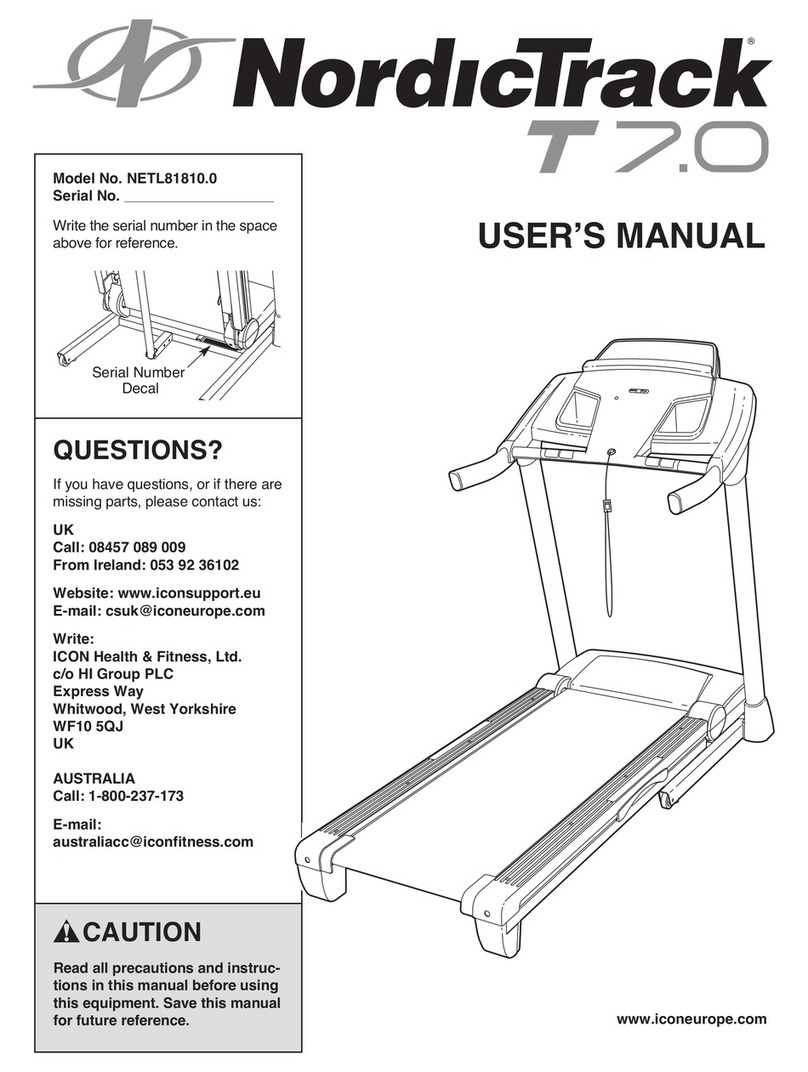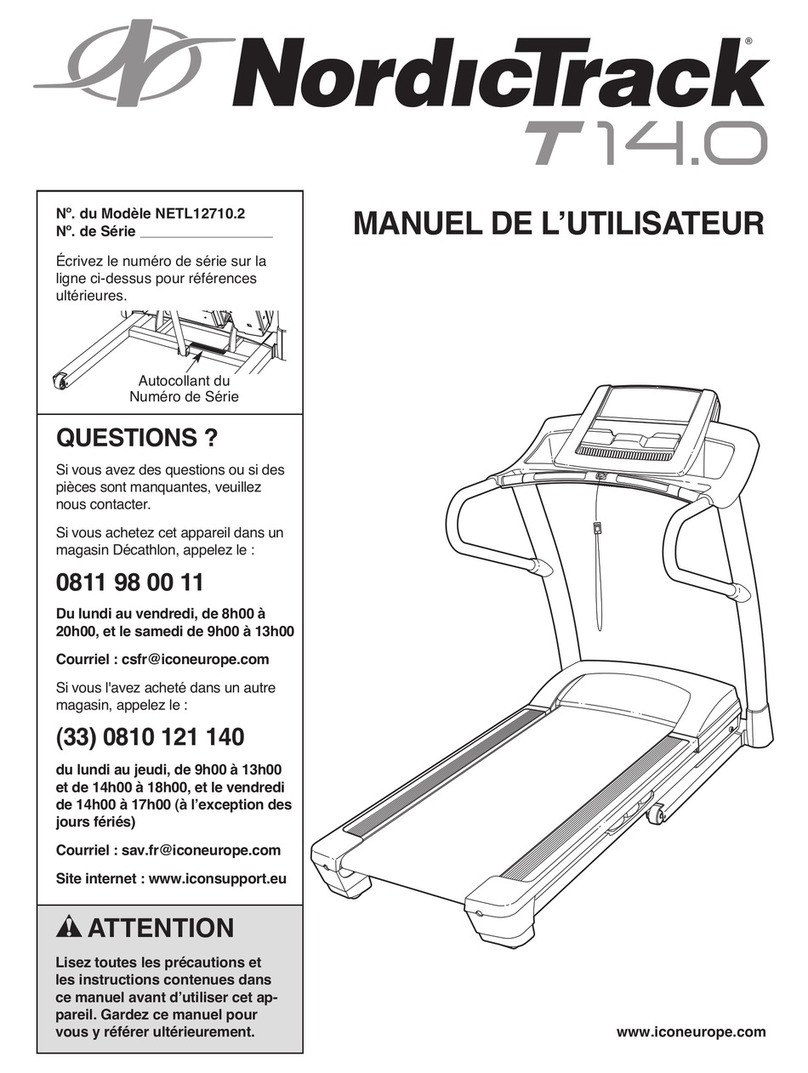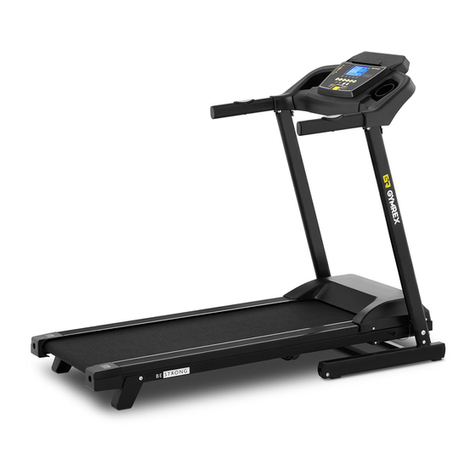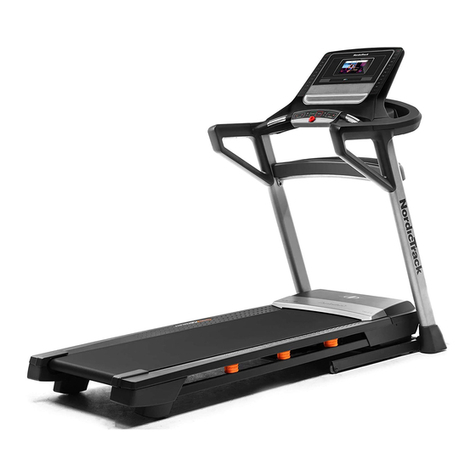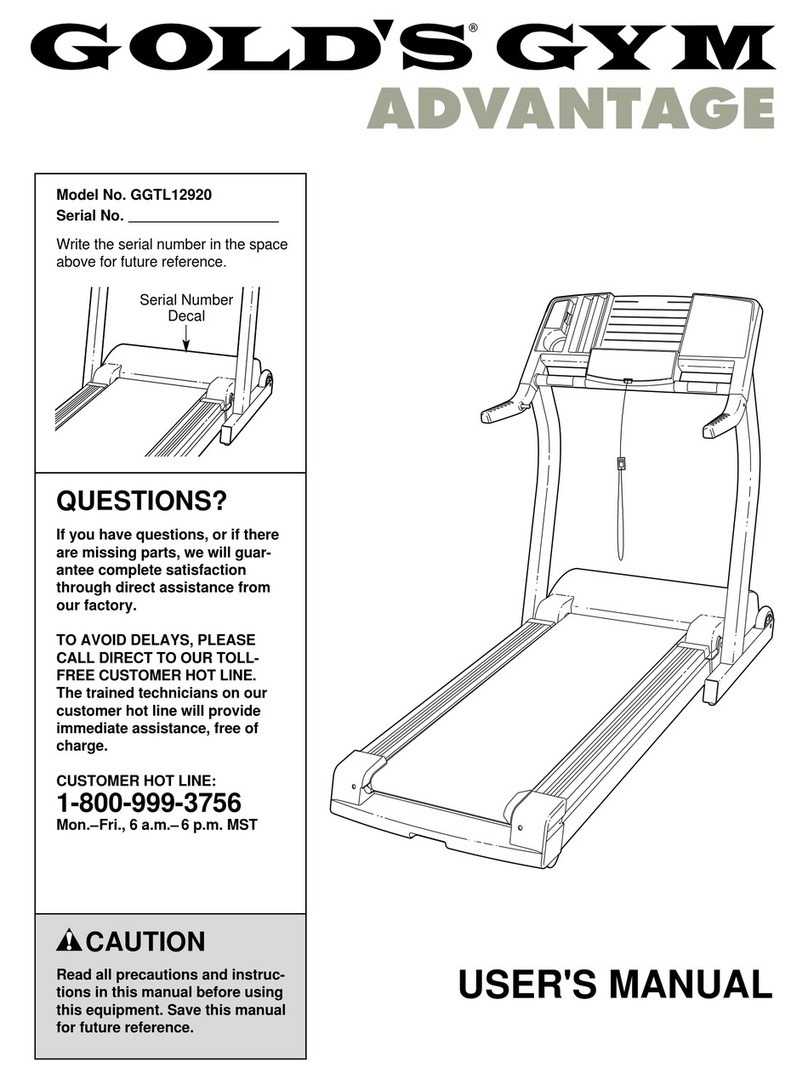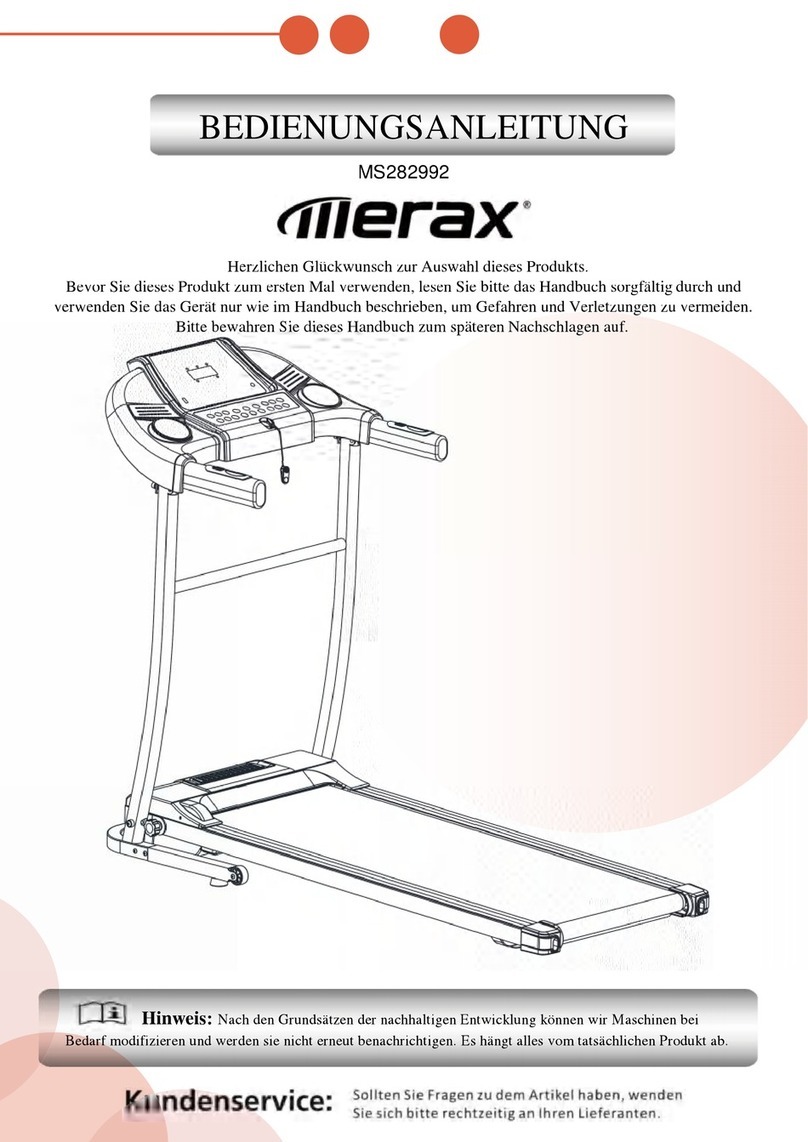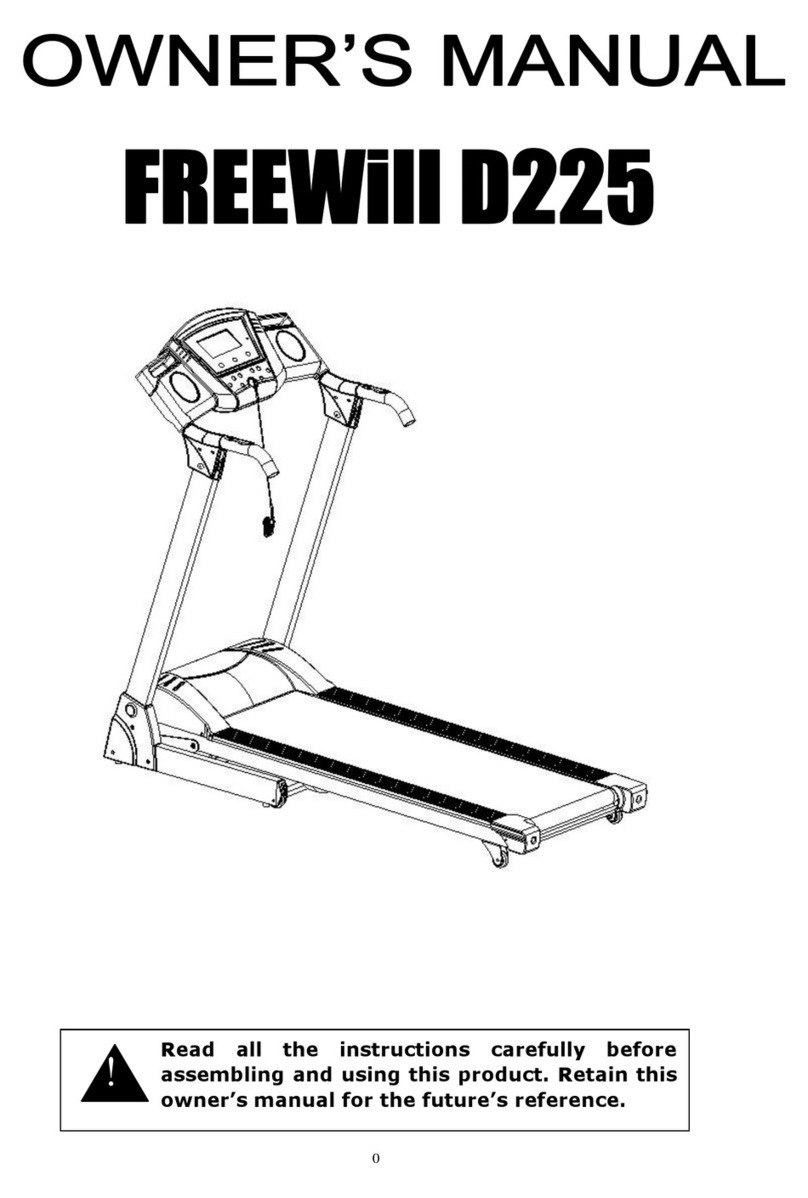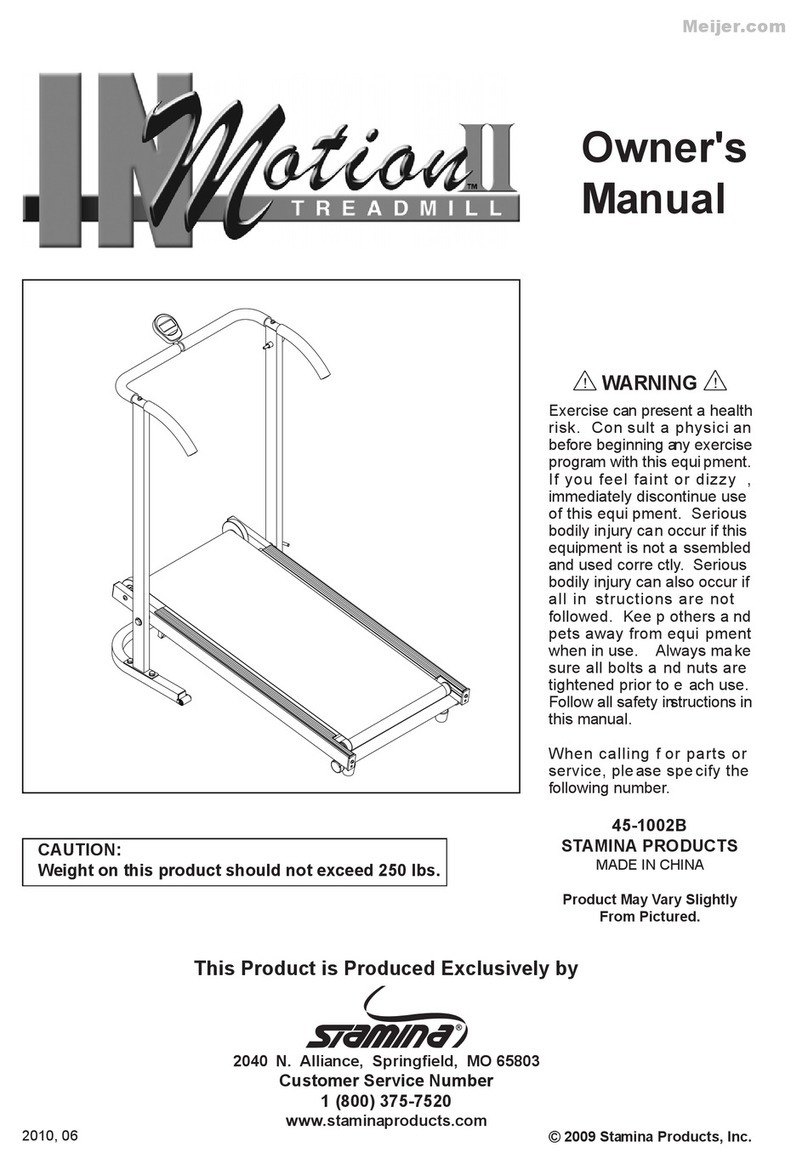BA-ORTHO_EN V2.0 Seite: 5 von 19
2 Treadmill description
The CALLIS treadmill is the basic model for all treadmill models currently produced by Sprintex
Trainingsgeräte GmbH. The model variants differ from one another only by special additions required for
individual areas of application e.g. variants with rails. The basic structure along with all safety-related and
ergonomic specifications remains unchanged.
The CALLIS treadmill is intended for physical training. It is used predominantly in clinics, rehabilitation, gyms
and by individuals. It consists of an electrically driven device that is adapted to suit local power supplies and
which can be installed and started-up without specialist knowledge.
The treadmill is not intended for a specific user group; it can be used for walking and running by both
younger and older people, the handicapped and children. In this connection, the treadmill may be provided
with different ranges of speed and inclination angle. The required adjustment for this is effected manually or
through a program via the associated terminal. The Polar chest belt allows additional monitoring of the speed
through the pulse rate. In the event of the pulse rate exceeding a level pre-set by the user/operator, then the
speed is reduced. When used by children or handicapped persons, the assistance of another person is
required to ensure the correct use of the product.
In the selection of materials, special attention has been given to durability, ease of cleaning and skin
tolerance. Likewise the choice of materials was made according to disposal criteria.
The treadmill has a further application in the measurement of distance covered. It indicates the distances
covered in kilometres to an accuracy of 1 meter.
Conclusions may be drawn by the user/operator (e.g. physical condition) from the indicated values on the
terminal (speed, time, distance and pulse rate). The treadmill is not intended to control other devices or
medicine or be used reciprocally in connection with them. It is very probable that the reciprocal effects will be
affected due to the physical training.
In normal use, the treadmill is unaffected by environmental influences in the areas of operation, transport
and storage. Routine maintenance and/or calibration are not necessary
2.1 Classification
The CALLIS Treadmills match to the DIN EN 957 standard, application class S (Studio: professional and/or
commercial use) precision class A (high precision) and are designed for the exercise, sport and therapy
segment.
Note: All CALLIS devices are medical devices matching to the 93/42 EWG policy.
According to DIN EN 20957 our devices are designed for observed environments by the devices owner.
The user’s weight must not exceed 160 kg. Only 1 person can practice on the device. Devices without
inclination and HzP (individual safety holder) with an extended maximum weight may be used by a user
weight up to 250 kg. Device label provides further information.

